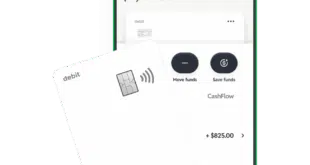Target Corp. is making good on its plans to accelerate chip-and-PIN payment card technology in its stores and among its customers with Monday’s announcement that it will move its entire Redcard credit and debit card portfolio to cards that use MasterCard Inc.’s chip-and-PIN technology. Most of Target’s cards, however, will not have the MasterCard brand.
Minneapolis-based Target also will install chip-compatible point-of-sale systems and software in all of its 1,797 U.S. stores by September, six months ahead of schedule, enabling its locations to accept the chip-enabled Redcards early in 2015.
Earlier this year, Target pledged $100 million on its chip card effort. The nation’s No. 2 general retailer, which tested but abandoned chip cards about a decade ago, launched that initiative in the wake of its huge data breach that compromised 40 million payment card numbers and non-card data on 70 million customers.
The chip card conversion means big changes on the back end for the Target Redcard portfolio. Target’s private-label credit card and its private-label debit card that uses the automated clearing house network will not have the MasterCard logo on them although their transactions will rely on MasterCard systems. But the existing co-branded Visa credit cards will be reissued as MasterCards, a Target spokeswoman says. Target did not reveal the size of its card files, but in recent years it has put more emphasis on its private-label credit and debit cards than on its Visa program.
Beginning with Visa Inc.’s announcement in 2011, all of the major general-purpose payment card networks have begun planning to convert their U.S. card bases from the fraud-vulnerable magnetic stripe to the Europay-MasterCard-Visa (EMV) chip standard in the next few years. EMV cards provide strong defenses against point-of-sale compromise and counterfeit fraud of the type that Target, Neiman Marcus, and other retailers have experienced, but they haven’t done much to reduce online card fraud. Still, the U.S. is the only major country that hasn’t converted to EMV.
“MasterCard has been vocal and steadfast on the importance of moving to EMV,” a MasterCard spokesperson says by email. “Our roadmap provides merchants and issuers with choices on how to implement EMV based on their individual needs. This effort—as well as advances in our proprietary chip offerings—is certainly being recognized by merchants such as Target.”
Target did not say why it chose MasterCard’s system. Industry observers generally acknowledge Target’s announcement as a positive action.
“Whether they chose Visa or MasterCard is … irrelevant,” says Nick Holland, senior analyst for payments at Pleasanton, Calif.-based Javelin Strategy & Research. The bank card networks are “playing nice” regarding the EMV conversion, according to Holland. He notes that both have struck deals with electronic funds transfer networks that ended controversies on how to facilitate chip PIN-debit card transactions that meet the Durbin Amendment’s transaction-routing requirements.
“The bigger news is not so much the card brand, but clearly Target is putting its money where its mouth is and taking the radical steps to push out EMV as soon as it can,” Holland says. “I hope the other retailers step up as soon as possible.”
Target’s decision to use chip-and-PIN, instead of chip-and-signature authentication, is telling, says Steve Mott, principal of Stamford, Conn.-based consultancy BetterBuyDesign. While PIN entry is common in other countries where EMV cards are the standard, it’s been a point of heated debate in the U.S. Many merchants and some banks have declared support for PIN authentication, while other banks and Visa have said that because of the EMV chip’s strong security, PINs aren’t necessary for authentication and that signatures can play a role.
“EMV, as we know, is effective in combatting counterfeit card fraud, so that’s good,” Mott says. “Much more has to be done, though, including end-to-end encryption and tokenization, and an online solution. But it’s interesting to note how both big merchants and big banks are consistently voting for including PIN, when Visa continues to flog the useless cardholder verification option of signature.”
Target also announced today it named Bob DeRodes as its chief information officer and executive vice president, replacing Beth Jacob, who resigned in early March. DeRodes has held senior information technology positions at the U.S. Department of Homeland Security and Center for CIO Leadership. He also has financial, payments and merchant experience, having held technology positions at Citibank, USAA, First Data Corp., Home Depot, and Delta Air Lines.





